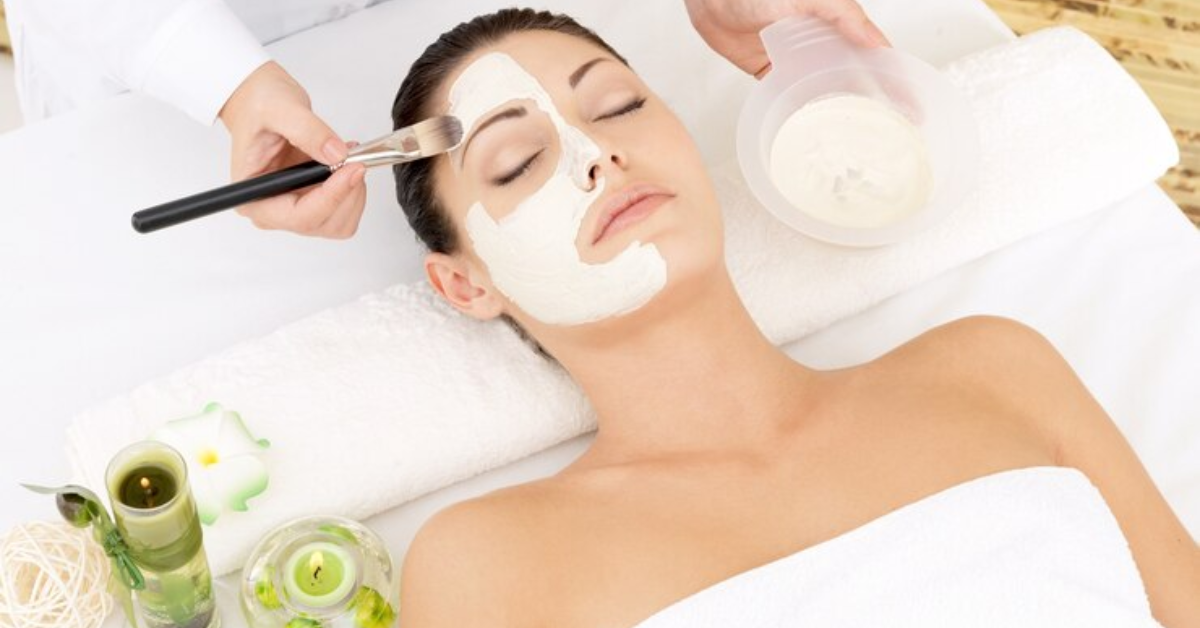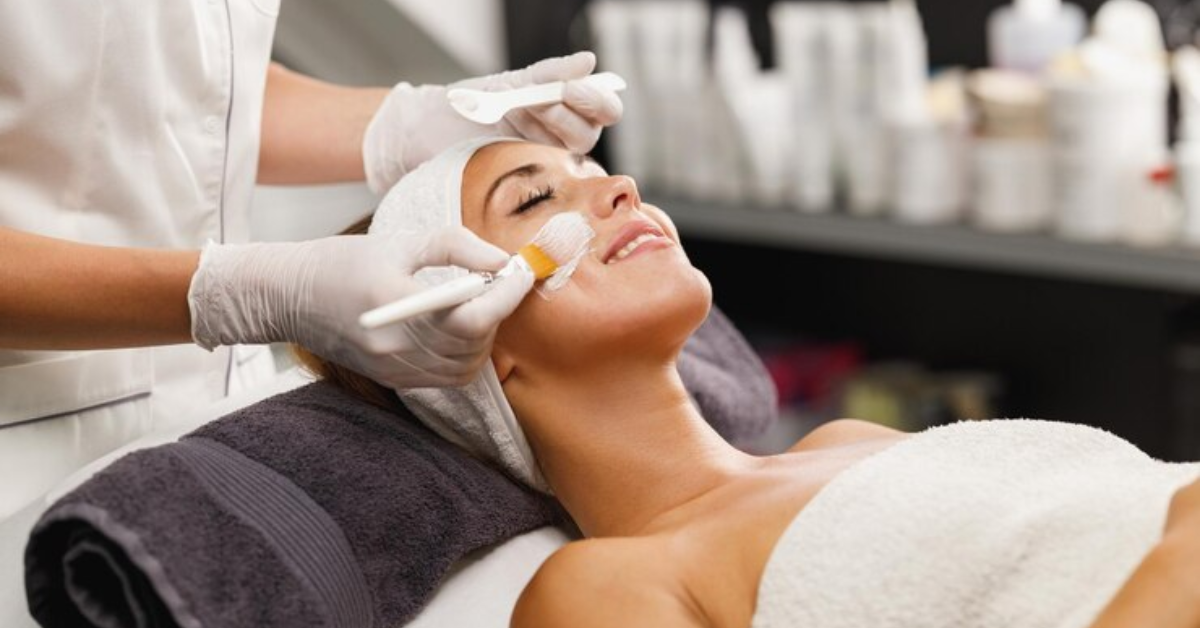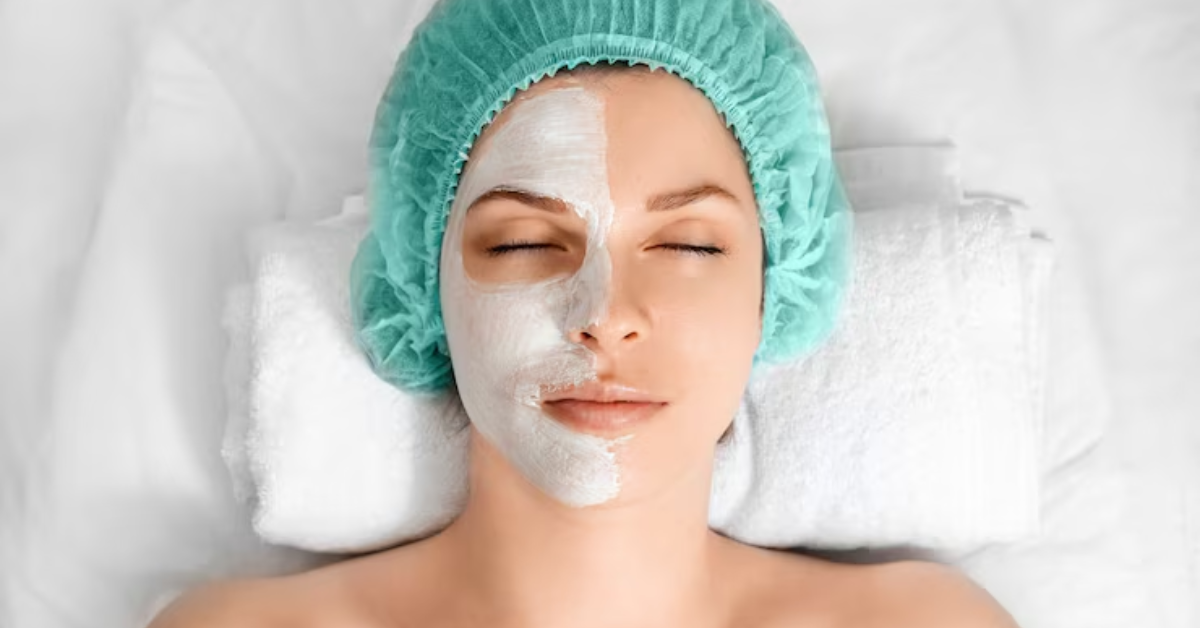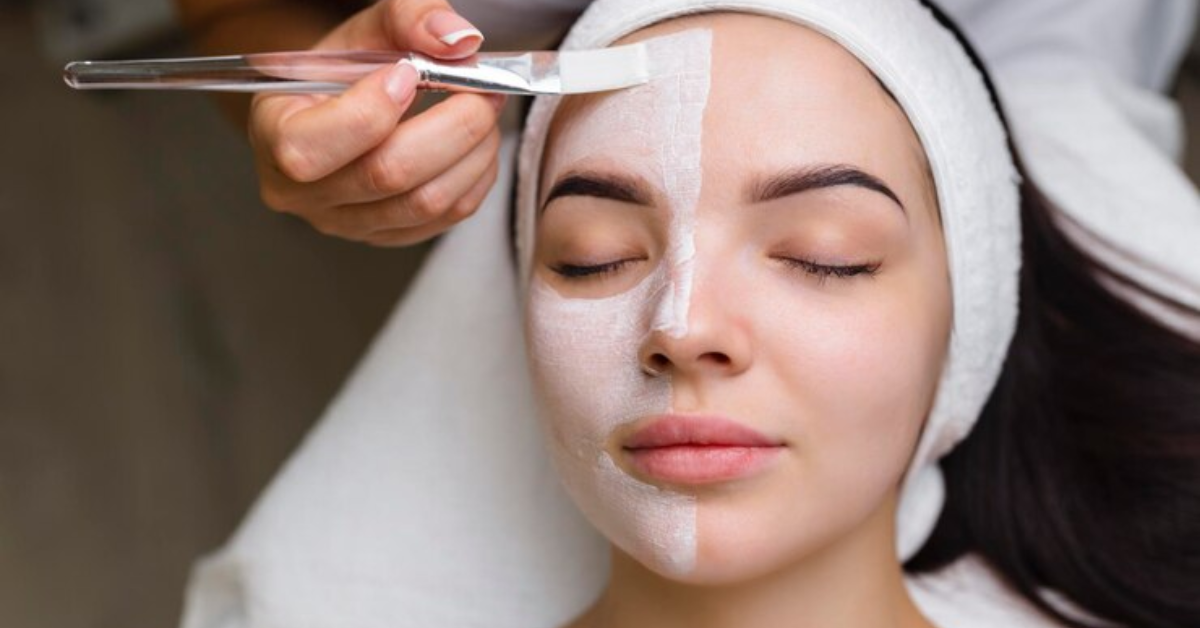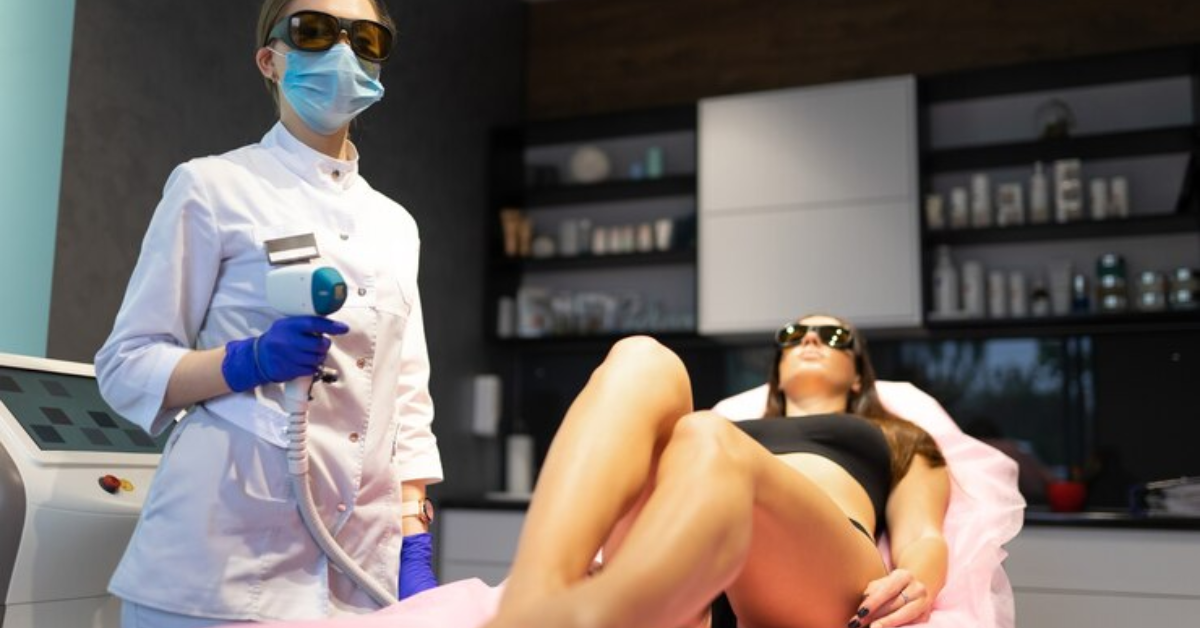Can Laser Hair Removal Lead to Skin Burn?
In the pursuit of smooth, hair-free skin, the world has witnessed a technological marvel: laser hair removal. This revolutionary cosmetic procedure has become increasingly popular, offering a seemingly magical solution to the age-old battle against unwanted hair. With the promise of long-lasting results and minimal discomfort, it's no wonder that countless individuals are opting for the precision of lasers over traditional hair removal methods.
But beneath the allure of silky skin lies a question that has crossed the minds of many contemplating this treatment: Can laser hair removal lead to skin burns? As we investigate the world of laser aesthetics, we begin a quest to discover the truth, dispel the myths, and understand the potential risks that accompany this cutting-edge solution to hair woes.
Still, as with any cosmetic procedure, the question of safety looms large. While countless individuals have experienced the benefits of laser hair removal without a hitch, there are concerns about the potential for skin burns, a topic that merits careful exploration. After all, when dealing with lasers and the body's largest organ—the skin—it's important to understand the potential risks and the measures one can take to ensure a safe and effective experience.
What Does Laser Hair Removal Do?
Laser hair removal is a cutting-edge method for getting rid of unwanted hair, and understanding its basic principles is essential for anyone considering this treatment. At its core, laser hair removal utilizes concentrated beams of light, also known as lasers, to achieve its goal. What makes this process so remarkable is its precision in targeting the hair follicles, which are like the roots of your hair beneath the skin's surface. These follicles are the key players in the hair growth game, and the laser's focused energy is directed right at them.
Now, the real magic of laser hair removal lies in its ability to single out these follicles without causing significant harm to the surrounding skin. This precision is possible because the laser is particularly attracted to the dark pigment in your hair, known as melanin. Think of it as a smart targeting system, like a superhero laser that only goes after the "bad guys" (the hair follicles) while sparing the "innocent bystanders" (your skin). This means that while the laser is busy zapping away the follicles, your skin remains relatively unharmed. It's this careful balance of power and precision that makes laser hair removal such an effective and popular choice for achieving long-term hair reduction and smooth skin.
The Importance of Professional Treatment
The quality of your laser hair removal treatment greatly depends on the expertise of the technician you select. Let's explore why it's important to opt for a qualified provider and the role of proper equipment and technician expertise in ensuring a safe and effective experience.
1. Qualified Providers Matter:
First and foremost, selecting a qualified and experienced provider is paramount. These professionals have undergone rigorous training and certification to perform laser hair removal. They understand the nuances of different skin types, hair colors, and treatment settings. Going to a reputable clinic or spa with trained staff can significantly reduce the risks associated with this procedure.
2. Proper Equipment and Expertise:
Think of laser hair removal machines as high-tech tools. Just like any tool, it needs to be in the right hands. Qualified technicians not only have access to state-of-the-art equipment but also possess the knowledge to adjust settings according to your unique needs. This ensures that the laser targets your hair follicles precisely without causing unnecessary harm to your skin.
3. The Risk of Untrained Hands:
Now, let's talk about the flip side. In untrained or inexperienced hands, laser hair removal can be risky. Incorrect settings can lead to burns, uneven results, or, in some cases, no results at all. Imagine a misaligned laser; it might cause more harm than good. Technicians who lack proper training might not understand the nuances of skin and hair interactions, potentially putting you at risk.
Professional treatment is like having a skilled pilot fly an advanced aircraft. They know how to navigate, adjust, and land safely. Opting for a qualified provider ensures that you're in good hands, significantly minimizing the risk of unwanted side effects, such as skin burns. So, when considering laser hair removal, always prioritize expertise and choose a provider who understands the art and science of this transformative procedure.
Factors That May Influence Skin Burns
To truly understand the risk of skin burns during laser hair removal, it's essential to consider several key factors that can play a role in this process.
Skin Type and Color: Your skin type and color are significant determinants in laser hair removal safety. Darker skin contains more melanin, the pigment that gives color to your skin and hair. Since the laser targets melanin, individuals with darker skin may be at a higher risk of burns because the laser may inadvertently focus on the melanin in their skin rather than just the hair. Specialized lasers and experienced technicians are required to safely perform laser hair removal on darker skin tones.
Hair Color and Thickness: The color and thickness of your hair also play a major part. The laser is most effective when it can easily distinguish between the pigment in your hair and the surrounding skin. Dark, coarse hair is usually the easiest to target because it contains more melanin. Light-colored or fine hair can be more challenging for the laser to detect, which might require higher energy levels that could increase the risk of burns.
Incorrect Settings on the Laser Device: Precise calibration of the laser device is important to ensure safe and effective hair removal. If the settings are too high or not adjusted correctly based on your skin and hair characteristics, it can lead to overexposure and potential burns. This is why it's crucial to have a qualified technician perform the procedure who can adjust the settings to meet your unique needs.
Insufficient Cooling or Numbing Measures: During laser hair removal, cooling methods and numbing agents are often used to minimize discomfort and protect the skin. If these measures are insufficient, the heat generated by the laser can become uncomfortable or even lead to burns. Adequate cooling and numbing are essential for a smoother, safer experience.
Signs and Symptoms of Laser Hair Removal Burns
While laser hair removal is generally considered safe when performed by qualified professionals, it's important to be aware of the signs and symptoms of potential skin burns. Knowing what to look for can help you identify any issues early on. Here, we'll describe the typical signs and symptoms of skin burns and when and how they may appear after the laser hair removal procedure.
- One of the most common early signs of a laser hair removal burn is redness and swelling in the treated area. This can occur shortly after the procedure or within a few hours. It's usually a temporary reaction to the laser's heat, but excessive redness or swelling beyond what's considered normal should be reported to your provider.
- Burns can be painful, and you may experience discomfort in the treated area. This can range from a mild tingling sensation to more severe pain, depending on the extent of the burn. It's important to communicate any pain or discomfort with your technician or healthcare provider.
- In some cases, burns from laser hair removal can lead to blistering of the skin. Blisters may appear a day or two after the procedure and can be filled with clear or bloody fluid. It's crucial not to pop these blisters, as this can increase the risk of infection and scarring.
- Burns may also affect the texture of your skin. You might notice that the treated area becomes rough, scaly, or develops a texture different from the surrounding skin.
- Changes in skin color are another possible sign of a burn. Hyperpigmentation involves the darkening of the skin, while hypopigmentation refers to a lightening of the skin. These color changes may become more noticeable in the weeks following the procedure.
- Burned skin can become itchy and sensitive. You might find yourself scratching the area, which should be avoided to prevent further irritation and potential infection.
It's important to note that not everyone will experience these symptoms, and the severity can vary. Some individuals may have mild redness and discomfort, while others may develop more pronounced signs of a burn. These symptoms typically appear within a few hours to a day or two after the laser hair removal procedure.
If you suspect that you have experienced a burn, it's important to contact your laser hair removal provider or a healthcare professional promptly. They can assess the situation, provide appropriate care, and help you manage any potential complications. Timely intervention is key to minimizing the impact of burns and ensuring a safe and successful laser hair removal experience.
Preventive Measures
You and your laser technician should work together to ensure a smooth and painless hair removal session. Here are some essential preventive measures to help minimize the risk of skin burns during laser hair removal:
Choose a Reputable Clinic
Selecting the right clinic or spa for your laser hair removal treatment is the first and crucial step. Research and choose a reputable establishment with experienced and well-trained technicians. Look for reviews and ask for recommendations from friends or family who have undergone the procedure. A trusted provider will use quality equipment, maintain strict safety standards, and employ skilled professionals, reducing the chances of burns.
Discuss Your Skin Type and Medical History
Open and honest communication with your laser technician is key to a safe experience. Before the procedure, inform your technician about your skin type, any previous skin conditions, and your medical history. These details are essential for customizing the treatment settings to your unique needs. For instance, individuals with darker skin may require different laser settings to minimize the risk of burns.
Follow Pre-Treatment Instructions
Your technician will likely provide pre-treatment guidelines that you should adhere to. These may include avoiding sun exposure and tanning for a specified period before your appointment, as tanned skin can be more susceptible to burns. You may be instructed to shave the treatment area beforehand, as long hair can absorb more laser energy and increase the risk of burns.
Follow Post-Treatment Care Instructions
After your laser hair removal session, your technician will provide post-treatment care instructions. These typically include avoiding sun exposure, refraining from using harsh skincare products or exfoliants on the treated area, and moisturizing as directed. Proper aftercare helps soothe the skin and reduce the risk of adverse reactions, including burns.
Be Diligent About Your Appointments
Laser hair removal is often performed in a series of sessions spaced several weeks apart. To maintain the continuity of treatment and minimize the risk of burns, attend all your scheduled appointments as advised by your technician. Skipping sessions or prolonging the treatment timeline can lead to suboptimal results and potential complications.
If you take these safety precautions, your risk of skin burns from laser hair removal will be greatly reduced. Remember that safety and success go hand in hand, and proactive steps taken before and after the procedure can help you achieve the desired results while safeguarding your skin's health.
Conclusion
Laser hair removal, when administered by skilled professionals, offers an effective and generally safe solution for hair reduction. While the potential risk of skin burns exists, it can be significantly reduced by choosing a reputable clinic, engaging an experienced technician, and diligently following pre and post-treatment guidelines. Prioritizing research, consultation, and informed decision-making at the outset of this journey toward smoother skin is essential for maximizing success and minimizing risk.
BOOK YOUR FREE SESSION
We will get back to you as soon as possible
Please try again later
-
Locations
- Laser hair removal fort lauderdale
- Laser hair removal Hollywood
- Laser hair removal Pompano Beach
- Laser hair removal Pembroke Pines
- Laser hair removal Dania
- Laser hair removal Coral Springs
- Laser hair removal Margate
- Laser hair removal Coconut Creek
- Laser hair removal Deerfield Beach
- Laser hair removal Hallandale
- Laser Hair Removal Cooper city
- Laser hair removal davie
© 2021 Huggie Beauty Developed by LocalOptimize.co - All Rights Reserved

